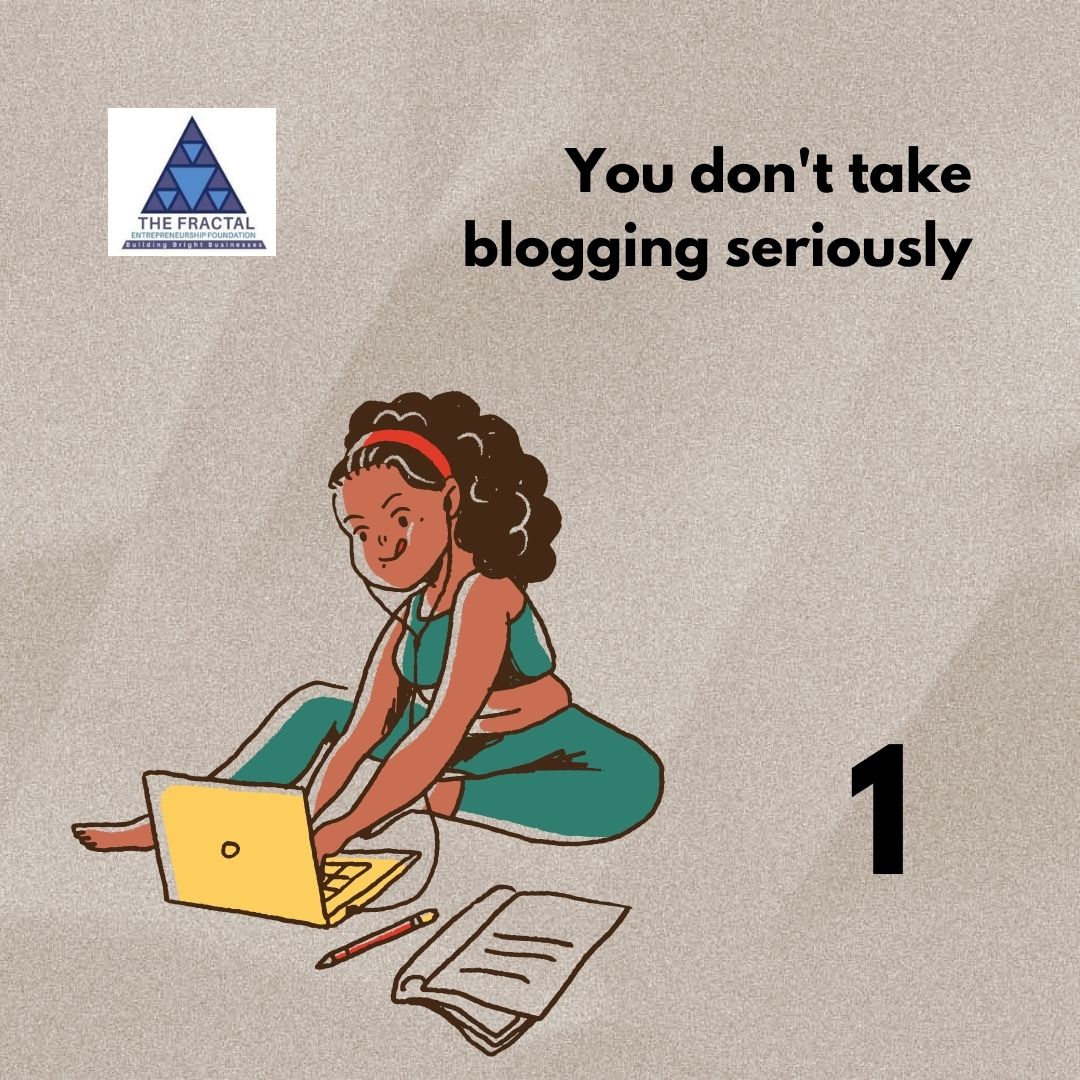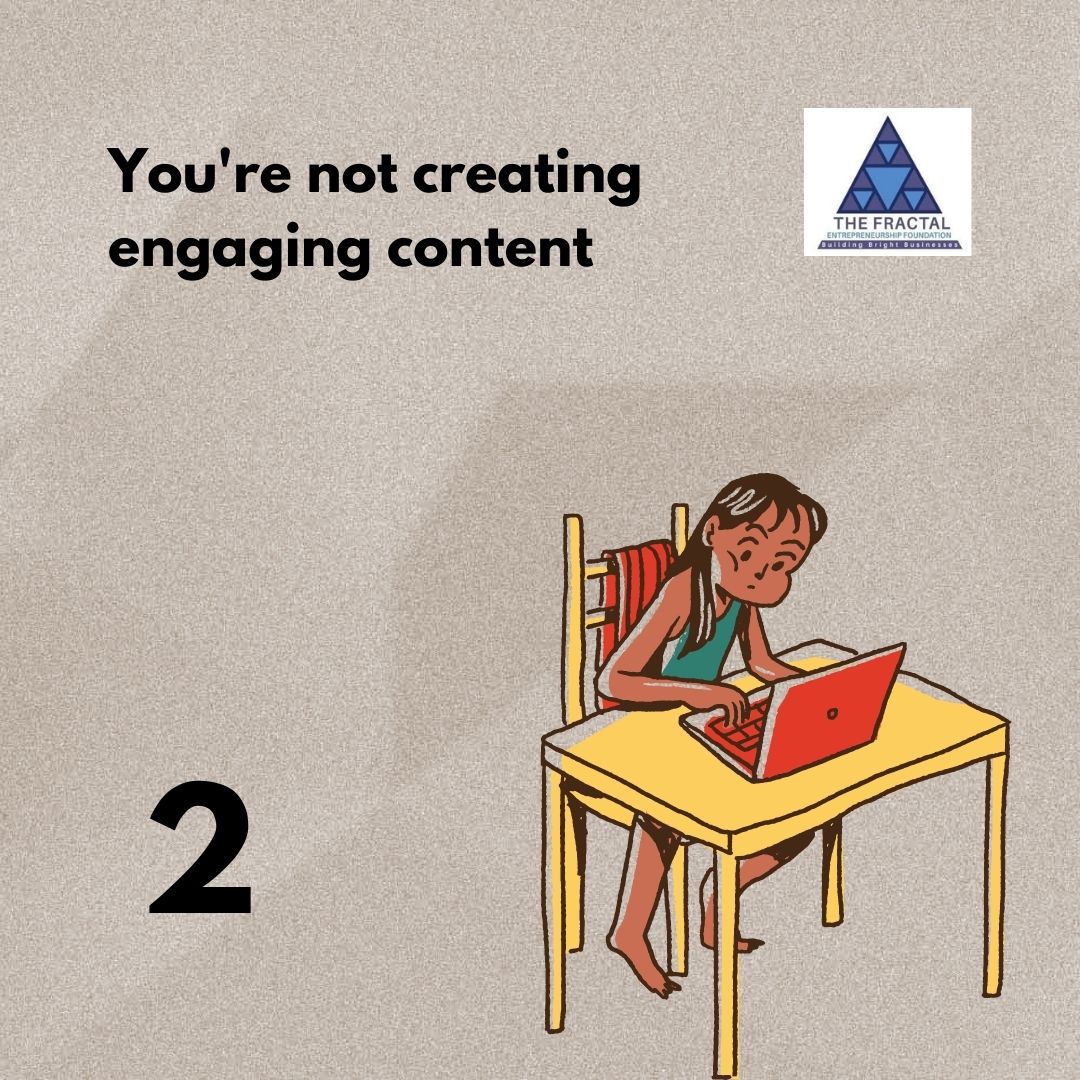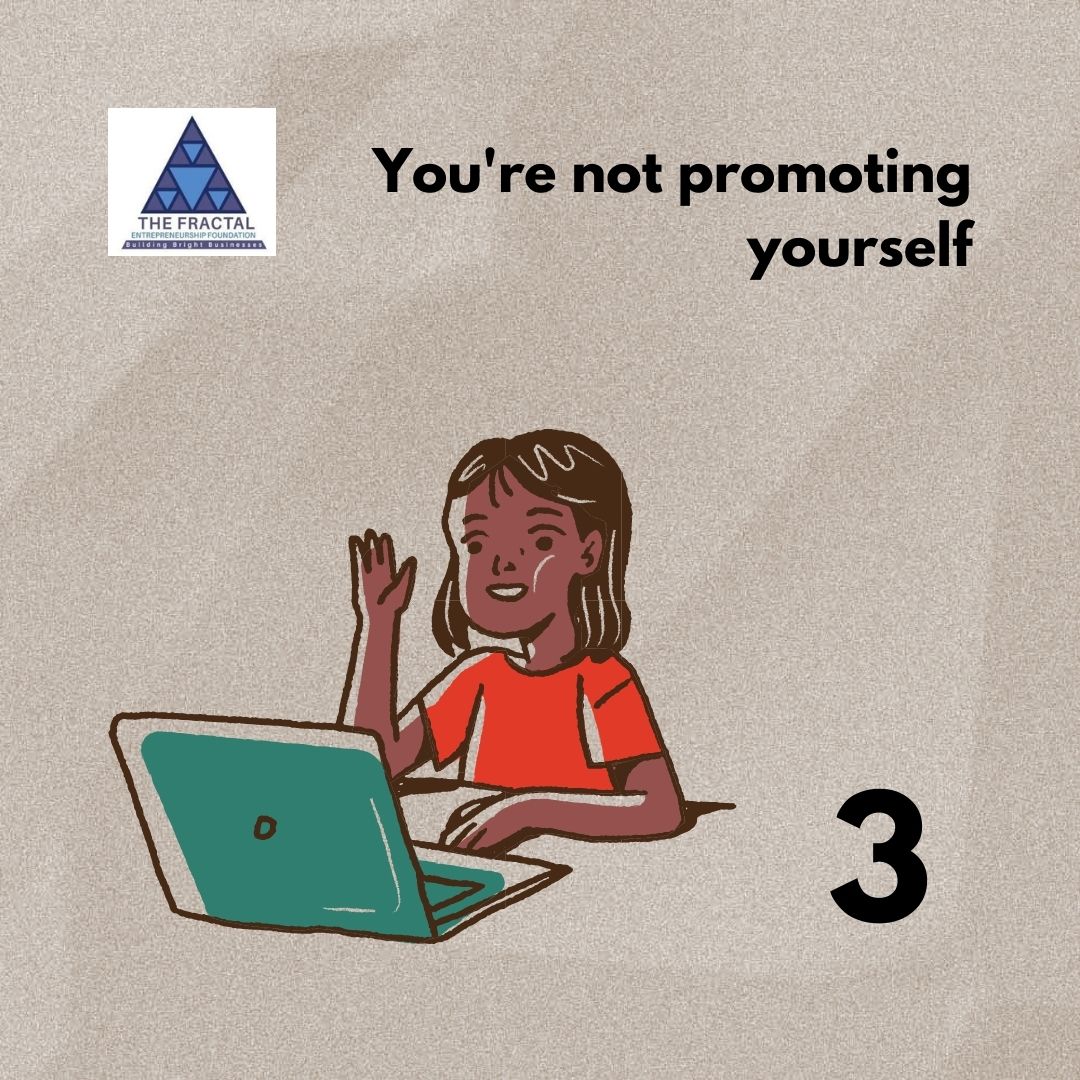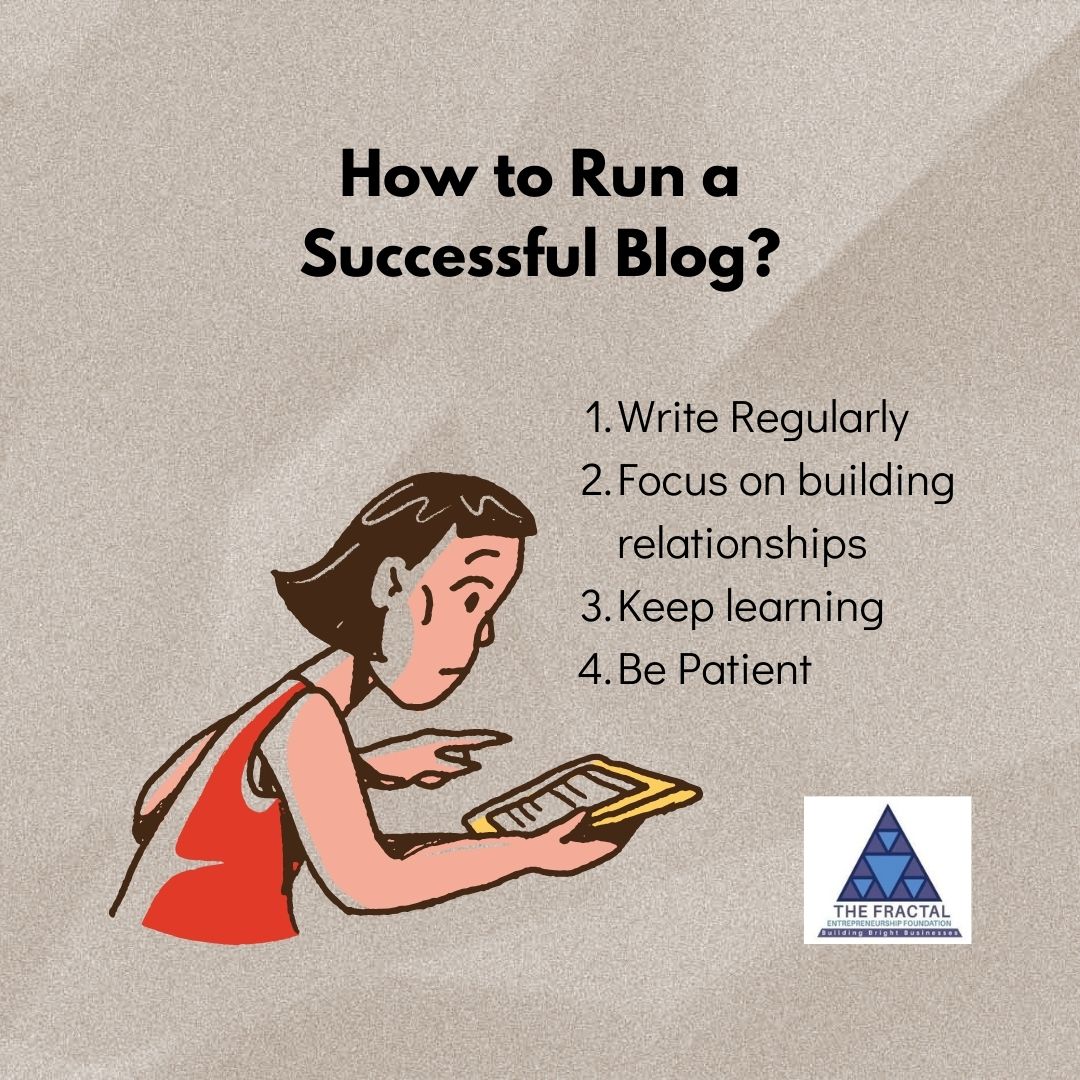Many bloggers fail because they lack focus. They try to do everything, and end up failing at almost everything.
There are only two types of blogs: focused and unfocused. Focused blogs are built around a single topic while unfocused blogs cover many topics.
If you want to build a profitable blog, you must choose a niche and stick with it. This will help you achieve success faster and make sure you never lose readers.
I’ve identified 4 reasons why most bloggers fail, and how to fix each one of them.
You don’t take blogging seriously
I’ve been reading a lot about how to build a successful blog lately. I’m sure most of us know what we’re doing, but there are still some tips out there that seem to work better than others. One thing that seems to come up repeatedly is that you shouldn’t treat blogging like a hobby or a side gig. You really do have to commit to it; otherwise, it won’t work.
If you want to build a successful blog, you have to treat it like a full-time job. You have to set aside enough time each day to write and publish posts. If you’re starting a blog today, you’ll probably start off posting once every few days. But over time, you’ll find yourself publishing multiple times per week. And eventually, you’ll find yourself writing daily.
The key here is consistency. Don’t just post whenever you feel like it. Write consistently. Post regularly. Be disciplined. These are the three keys to building a successful blog.
You’re not creating engaging content
The biggest reason why many bloggers fail is because they aren’t producing engaging, outstanding quality “content.” In fact, according to HubSpot research, 72% of B2C content creators have made the production of engaging content a “top priority.” This isn’t surprising when you consider how many people are now blogging about topics like personal finance, health, parenting, food, DIY projects, etc.
With so much content being produced every day, great content is the bare minimum bet for getting in front of audiences. So what does it mean to produce engaging content? Well, here’s a quick rundown:
1. You must always keep your audience in mind.
2. Your content needs to be useful.
3. It must be original and unique.
4. It must be relevant to your niche.
5. It must be written well.
You’re not promoting yourself
According to recent data from WordStream, 76 percent of marketers stated that they planned to increase the amount of content they produced in 2016 compared to 2015. However, most of those marketers didn’t plan to spend more money on marketing materials. Instead, they claimed that they’d simply focus on creating more quality content.
But what does that mean exactly? Is it just about writing more articles, or do we really need to start thinking about how we promote our content once it’s written?
The answer is yes. If you want to stand out among the competition, you’ve got to think like a publisher and market your content effectively. You need to understand the value of every word that you write, and make sure that you’re providing compelling information to your readers.
That doesn’t necessarily mean that you’ll need to hire a writer to help you craft your content. But it does mean that you need to take some extra steps to ensure that everything you publish is well-written, engaging, and informative.
How do you promote your content?
Content marketing has become an essential part of any digital marketing strategy. If you don’t have a solid content marketing plan, you may find yourself struggling to generate leads and sales.
Let’s discuss how to promote your content effectively.
#1. Use Social Media
Social media platforms such as Facebook, Twitter, Instagram, LinkedIn, and Pinterest are excellent tools for promoting your content.
These sites allow users to share information, pictures, videos, links, and articles. They also provide analytics that can help you measure the success of your campaigns.
For example, let’s say you run a blog about organic foods. You can set up a campaign on Facebook that allows users to share posts related to organic food. This will encourage potential customers to visit your website.
#2. Create Content That People Want To Share
People tend to share content that interests them. For instance, if you write about dog training, you may want to include images of cute puppies.
This will give your audience a reason to share your content.
It’s also helpful to think about what types of content would interest your target audience. For example, if you’re writing a blog about gardening, you might want to include tips on how to setup and maintain a flowering garden in your local city conditions.
#3. Promote Content Through Email Marketing
Email marketing is another effective tool for promoting your content. You can send emails to your subscribers, asking them to share your content. You can also ask them to subscribe to your email list.
#4. Include Links in Your Emails
When you send emails to your subscribers and clients, you should include links to your content. These links will lead readers directly to your site.
Links within your email messages are especially useful because they appear above the fold on mobile devices.
#5. Add Calls to Action
Calls to action are buttons or text links that prompt visitors to perform certain actions.
For example, you can add a call to action button to your blog posts. Visitors click these buttons to learn more about products or services.
A call to action button can also be added to social media profiles. Users click these buttons to follow you on social media, sign up for your newsletter, or contact you.
#6. Write Blog Posts About Related Topics
Writing blog posts about topics similar to those you cover in your main blog posts can drive traffic to your site.
For example, if you write about healthy food, you can also write about intermittent fasting and eating fruits and whole food plant-based diet.
By writing about related topics, you can attract more traffic to your site. And since you’ve written about a topic that relates to your primary blog, you can link back to your original content.
#7. Ask Influencers to Share Your Content
Influencer marketing is one of the most powerful strategies available for driving traffic to your site. By reaching out to influencers, you can ask them to share your content on their blogs, social media accounts, and websites.
You can also pay influencers to promote your content. However, this option isn’t recommended unless you have a budget to spend.
#8. Run Ads
Advertising is another popular method for promoting your content. There are several types of ads, including banner ads, video ads, display ads, and sponsored posts.
Banner ads are small graphics that appear across the top of a web page. Video ads play automatically when a user visits a webpage. Display ads show up on search results pages. Sponsored posts appear alongside organic content.
Each type of ad offers its own benefits. Banner ads are inexpensive, but they won’t reach everyone. Videos are eye-catching, but they cost money to produce. Display ads are highly targeted, but they aren’t always seen by people searching online.
#9. Offer Free Resources
Free resources can be used to promote your content. Examples include ebooks, whitepapers, guides, cheat sheets, and templates.
Offering free resources gives you the opportunity to connect with prospective customers. Plus, you can use these resources to create additional content.
#10. Host Events
Events are another way to promote your content. You can host events where attendees can interact with each other and you.
Attendees can talk about your product or service, exchange ideas, and network with others.
Ensure that you offer exclusive content for the event attendees with a special coupon code so that you can keep track of them.
#11. Participate In Online Communities
Online communities are groups of people who communicate and collaborate via the internet.
They often focus on specific topics, such as fitness, parenting, business, and technology.
Participating in online communities can help you meet new people and grow your brand. It’s also a good idea to join forums and message boards that relate to your industry.
#12. Attend Local Meetups
Local meetups are informal gatherings held in person. They usually take place once per month.
Meetup members attend these events to meet new people and build relationships. Some meetups offer food, drinks, and entertainment. Others are focused on networking and professional development.
Find a meetup near your home and participate in it regularly. You can also organize your own meetup group.
#13. Join Industry Associations
Industry associations are organizations made up of professionals working in a particular field.
Joining an association can benefit you in many ways. First, it provides access to experts in your industry. Second, it helps you build credibility among peers. Third, it can increase your visibility in your industry.
#14. Start A Podcast
Podcasts are audio recordings that are distributed over the internet. They can be hosted on YouTube, SoundCloud, iTunes, Spotify, and Apple Music.
Podcasts are becoming increasingly popular. According to Podtrac, there were 1.5 billion podcast downloads in 2021.
Many companies now sponsor podcasts. As a result, you can get paid to record and distribute your own podcast.
#15. Get Involved With Other Brands
Another great way to promote your content is to get involved with other brands.
For example, some businesses hire bloggers to review their products. Or they partner with influencers to promote their products.
There are countless opportunities to promote your content through collaboration.
#16. Build An Email List
An email list is a collection of email addresses that you collect from various sources.
You can use these lists to send promotional emails to your contacts. When someone subscribes to your email list, they agree to receive future emails from you.
To make sure your emails are delivered correctly, you must verify your email address before sending the first email.
#17. Develop Relationships With Influential People
Relationship building is another effective way to promote your content online. You can develop relationships with influential people by following them on social media, commenting on their posts, and sharing their content.
Once you establish a relationship with a prominent blogger, you can ask her to feature your content on her website.
#18. Connect With Potential Customers On Social Media
Social media platforms like Facebook, Twitter, Instagram and LinkedIn are great places to promote your content.
Users post comments, questions, and photos on these platforms. If you respond to these comments and questions, you’ll gain valuable insights into what your audience wants.
Use these insights to improve your content and optimize your strategy.
#19. Use Visual Content
Visual content includes things like infographics, videos, presentations, and slide decks.
These formats allow you to present information quickly and effectively.
In addition, visual content is easier to read than long blocks of text. This makes it ideal for busy audiences.
#20. Make Sure Your Website Is Mobile Friendly
Mobile users account for nearly 50% of all internet usage. Therefore, it’s critical that your website is optimized for mobile devices.
If your website doesn’t load properly on smartphones and tablets, potential customers may leave without reading any of your content.
This could hurt your SEO rankings and cause you to lose traffic. To avoid this problem, test your site using different browsers and devices.
#21. Create Infographics
Infographics are graphic representations of data. They’re easy to understand and digest.
People love infographics because they provide interesting visuals. They’re also visually appealing.
As a result, infographics are perfect for promoting your content.
You’re just like everyone else
The idea behind great content creation isn’t necessarily about coming up with something amazing. In fact, one of the best pieces of advice I’ve ever received came from David Meerman Scott. He writes that “the goal is to come up with something that your audience wants.” If you look at the most successful blogs out there, they tend to fall into one of three categories:
1. They provide value to readers.
2. They entertain readers.
3. They educate readers.
– If you focus on providing real value to your readers, you’ll find success.
– If you write entertaining content, you’ll find success too.
– And if you write educationally sound articles, you’ll find success even further.
Conclusion
A lot goes into running a successful blog. But once you’ve got everything set up, there are plenty of ways to monetize your efforts. Whether you’re looking to build a passive income stream or grow a thriving online business, blogging is one of the most effective tools around.
In conclusion, blogging is a great way to share your thoughts and ideas with the world. However, like anything else, it takes hard work and dedication to succeed. So if you want to become a successful blogger, here are a few tips to help you along the way:
First, write regularly. Blogging doesn’t happen overnight; it requires consistent effort over time. Don’t expect to post three times a week and suddenly have thousands of readers show up each day. Instead, aim to produce quality content consistently, and eventually you’ll build up a following.
Second, focus on building relationships. This means interacting with other bloggers and sharing their posts. By doing so, you’ll gain valuable insight into how to improve your own writing style and attract more followers.
Third, keep learning. There are plenty of resources available online that can teach you how to blog effectively. From free courses to paid training programs, there’s never been a better time to jumpstart your career as a writer.
Finally, be patient. Building a large audience takes time, especially if you’re just beginning. But don’t worry too much about it. Just keep posting high-quality content, and eventually you’ll reach your goal.
Is your blog succeeding or failing? Write your experience to us. Let us discuss.
Be Blessed by the Divine!
Krish Murali Eswar.






Leave a Reply